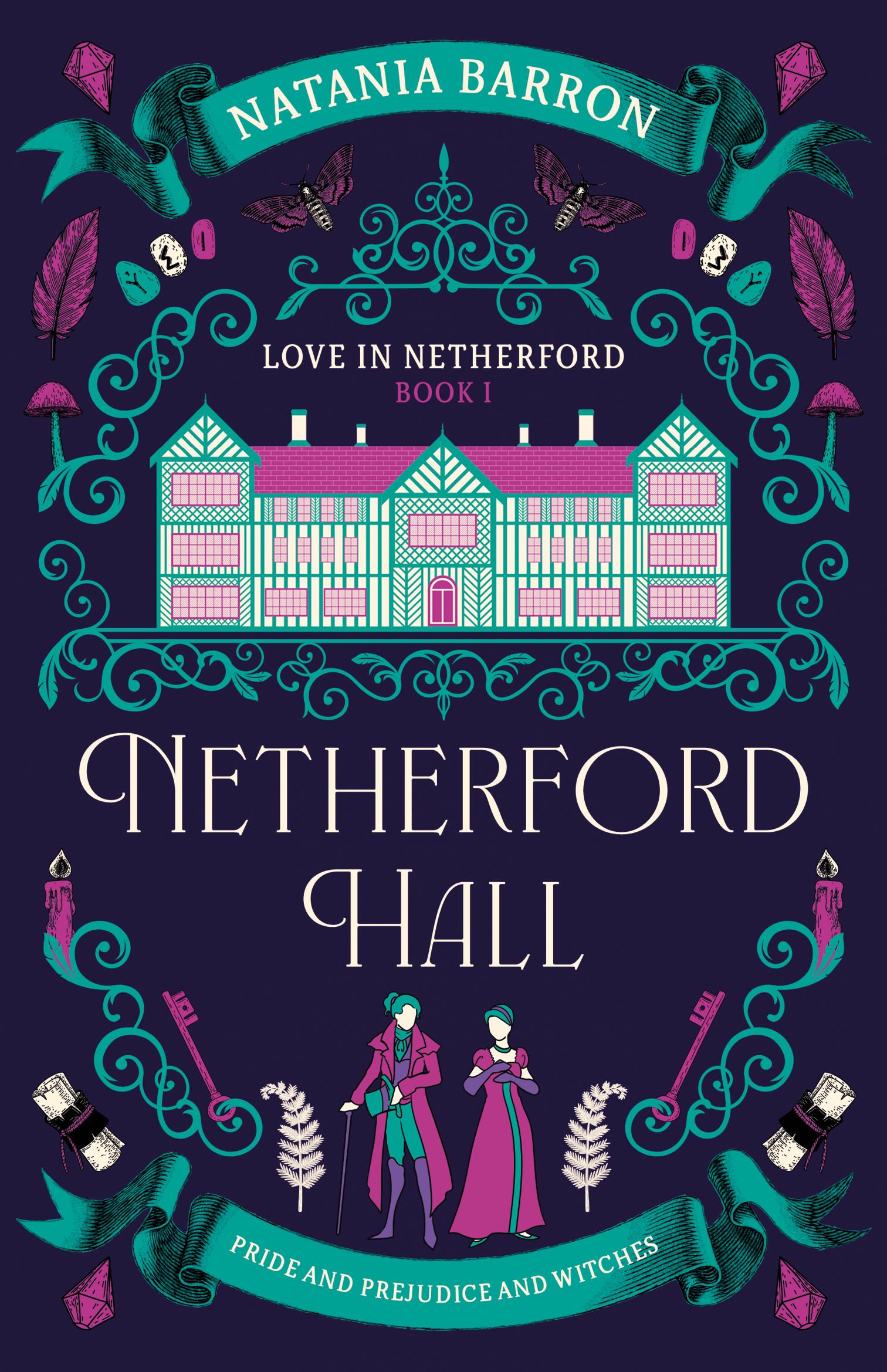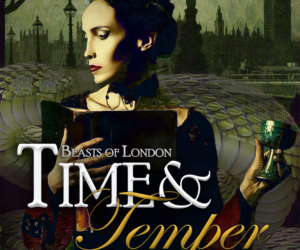
What is a gentlewitch?
 We are quickly approaching the release date for Netherford Hall, and I’m currently busy working on the third installment, The Game of Hearts, right now, so my brain is thinking about all things gentlewitch. (Which is available to pre-order in paperback and in ebook–and soon in audiobook.)
We are quickly approaching the release date for Netherford Hall, and I’m currently busy working on the third installment, The Game of Hearts, right now, so my brain is thinking about all things gentlewitch. (Which is available to pre-order in paperback and in ebook–and soon in audiobook.)
Now, this is a term I’m very familiar with. In fact, I’ve been writing so much about gentlewitches that I forgot it’s a term I made up.
So, I wrote a little backstory about said magical beings, a la Tolkien’s “Concerning Hobbits.”
What is a gentlewitch?
To understand the Love in Netherford series, one must first become acquainted with the role of a gentlewitch in English society.
The year is 1812. The Great Peace between witches and mortals has stretched for a little over two hundred years, but preternaturals—witches, werewolves, and vampires—have lived side-by-side with humankind for at least a millennia. Just not always in agreement. We have Queen Elizabeth I for establishing the first gentlewitch titles, elevating thirteen houses to a peerage, gaining land and status in exchange for pledging their loyalty and lives to the protection of the Crown.
It was 1578, a year after the Witches Spiritual aided Elizabeth I against the Spanish Armada, that the Coven Council was officially absorbed into the larger body politic. In 1717, when the Parliament of England became the Parliament of Great Britain, the Coven Council was officially recognized as an extension of the Lords Spiritual. There are thirteen members of the Coven Council, all of which are inherited positions, but voted on by members of the founding families.
Beyond the Coven Council, there are hundreds of gentlewitches across Great Britain and the Continent, who all trace their lineage back to the first thirteen families. Each has an ancestral home, though many live and work in London or abroad. In times of yore, it was said gentlewitches were more powerful closer to their ancestral homes, but that has been disputed.
Gentlewitches may own property, inherit property, and marry as they like. As a whole, they have been the driving force for progressive change, helping to alleviate tensions wrought by the East India Company, slavers, and privateers.
Other witches do exist in the Realm, but they are not part of the thirteen families, and are referred to as hedge witches. Hedge witches must register with the local gentlewitch household, share all their magical inclinations, and file for specific magical provisions in order to practice their powers under the protection of the local house.
Especially powerful hedge witches may be “tempered”—adorned with bangles of metal which curb their magic for the safety of all. With no structure or accountability, they must be closely monitored for potential instability.
All witches live longer lives than their mortal counterpoints, aging more slowly over time. Getlewitches each choose a discipline of magic to focus on after their harrowing, a secret test of physical, magical, and mental prowess, most take in their twentieth year. This assesses their strengths and weaknesses, and the results are shared with the Coven Council for posterity.
Officially, members of Parliament are welcoming and grateful for the gentlewitches and Coven Council for their wisdom and protection. Unofficially, there is some resentment with their continued power and influence.
There are many other witches and mages across the world, of course, but their governance is relegated to their specific countries of origin.
Edith Rookwood, one of the protagonists of the series, is a gentlewitch–but not a remarkable one, at least not at first. Her harrowing was unremarkable. In fact, she barely passed it. A big part of the series is her discovering her capabilities and confronting her own desire for power.
And a desire for power is probably the biggest weaknesses among gentlewitches. Although this world is more diverse in terms of sexuality, demographics, and power between genders–and that good stuff is certainly brought about by gentlewitches–they still love power. And this causes all sorts of problems, especially when we discover where their power comes from in the first place.
Finally, here is an excerpt from Netherford Hall, featuring some of the key players: Poppy Brightwell (Edith’s love interst), Auden Garcliffe (Edith’s uncle), and Laertes Byrne (vampires) over dinner.
Poppy derived no pleasure speaking with Laertes Byrne. He gazed at her as if she were a crooked painting he could not straighten, and it made her squirm.
“Tell me, Mr. Byrne,” Poppy said, refusing more wine from one of the servants. She had to be careful tonight. “What do you mean by ‘the old ways,’ in regards to Netherford Hall and the gentlewitch?”
Mr. Byrne gave a smug grin. “Oh, I forget, little darling, how unfamiliar you are with the ways of the arcane folk.”
“Though I’ve lived here most of my life, we’ve never had a gentlewitch in that time,” she simpered. “And my mother and father never spoke of vampires.” Yes, she could play the ingénue if needed.
“Then let me enlighten you. It is said that the Fae themselves bestowed powers upon the witch bloodlines, back before the world changed, when we were one people,” said Mr. Byrne, breathing in the substance in his glass. He had not been served food in any form other than liquid. “All three preternatural houses—witches, vampires, and werewolves—are said to be descended from the Fae. And it is from the Fae that we inherit our traditions.”
Poppy suppressed a shudder and forced an interested expression on her face, batting her eyelashes coyly.
“Such sentiment is terribly out of fashion,” chimed in Mr. Garcliffe.
Mr. Byrne shrugged. “You short-lived creatures wouldn’t know fashion if it was wrapped up in paper and tied with ribbons,” he scoffed. “But I digress! Regardless of Mr. Garcliffe’s opinions, the ‘old ways’ are clear on disputes such as these: the contending witches must come face one another in the Rite of Place. It is a kind of second harrowing.”
“Harrowing?” Poppy did not have to feign her ignorance this time.
“That’s the test of a witch,” said Auden. “It is completed before a witch’s twentieth birthday, to discern which branch of witchcraft suits them best.”
“It’s more complicated than that,” said Laertes. He sloshed around whatever substance he was drinking and made a sour expression. “In order to best nurture their strengths, which are typically quite clear during the harrowing, they are attuned to their homes. I doubt even Mr. Garcliffe understands that particular ceremony, as it is shrouded in most sacred secrecy. But a witch, gentle or otherwise, is only as powerful as the land she cares for.”
“That’s why you came to Netherford,” said Poppy, addressing Auden. “And why the Rookwood-Nourses want it so badly.”
Mr. Garcliffe gave her a weary nod. “Indeed. But, unlike the larger dynasties, we have limited capacity.”
“Such a tragedy,” said Mr. Byrne. “The Rookwood-Nourses are looking for a place to put down their own roots. Netherford has old bones, and Netherford Hall most of all.
“At any rate, a Rite of Place is likewise an attunement. It is also a contest, of sorts, for the land itself. An arcane duel.”
Poppy felt as if she was missing something. “Why didn’t Liege Rookwood bring about the challenge right away?”
“Because,” said Auden, “as I said, it is considered somewhat old fashioned. A bit, ah—well, backwater. Perhaps not best for someone still trying to improve upon her reputation.”
“That, and everyone knows that our liege is not the most, shall we say, dazzling enchanter,” said Laertes, voice dropping even lower.
Poppy flushed, shocked at Mr. Byrne’s tactlessness. She may no longer be beholden to the gentlewitch, but she had absolute confidence in her abilities. The vampire’s words offended her to her marrow.
“Well, I have every bit of faith in her,” said Poppy. “And I cannot imagine a situation where she wouldn’t find some path to success. Netherford Hall is in her very bones. She belongs there as much as the village belongs between the rivers.”




